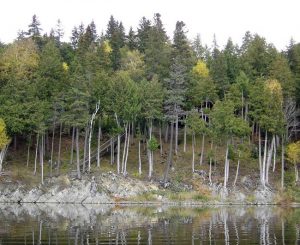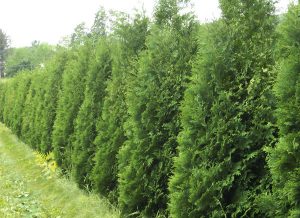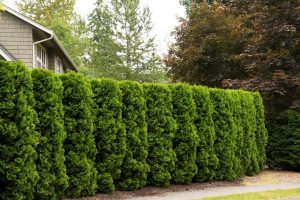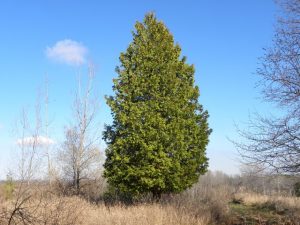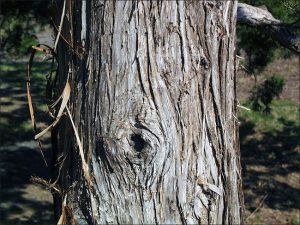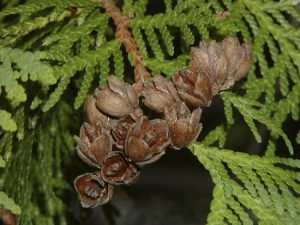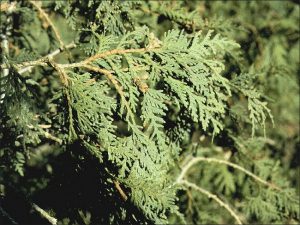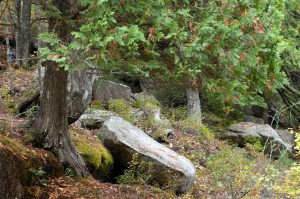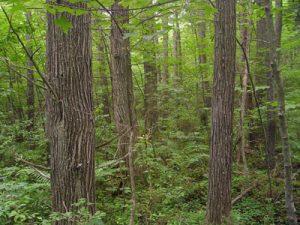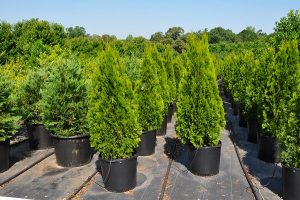Northern White Cedar
Northern white cedar also called swamp cedar is an evergreen species of conifers found in eastern Canada and many places in the United States. Since its barks, twigs, and sap are believed to have medicinal properties, it is named “arborvitae” in Latin, meaning “tree of life.” Although northern white cedar is closely related to western red cedar, the two species differ in their geographic range, minutely pointed scales of seed cones, and leaf color.
Scientific Classification
| Kingdom | Plantae |
| Division | Pinophyta |
| Class | Pinopsida |
| Order | Pinales |
| Family | Cupressaceae |
| Genus | Thuja |
| Scientific Name | Thuja occidentalis |
Quick Information
| Other Names | White cedar, Eastern white cedar, Eastern arborvitae, American arborvitae, Thuier cèdre, Cèdre blanc |
| Size | Small to medium-sized; average height is 49 ft (15 m), trunk diameter is 2ft 11 in (0.9 m); rare specimens have a height of 125 ft (38 m) and diameter of 5ft 11 in (1.8 m) |
| Identification | Leaves (Needles): Bright green above, pale green below, 2 mm long, scale-like, abruptly pointed, occurs in alternating pairs, release a spicy scent when crushedCones: Brown, ellipsoid, 9-14 mm long, 8 seeds with lateral wings occur per cone Bark: Red-brown to gray, fibrous; with flat, connected ridges |
| Shape at Maturity | Conic to pyramidal |
| Distribution/Range | New Brunswick, Ontario, Manitoba, Quebec, Nova Scotia, Prince Edward I (Canada); Kentucky, Indiana, Connecticut, Maine, Illinois, New York, New Hampshire, Michigan, Missouri, North Carolina, Massachusetts, Pennsylvania, Ohio, Virginia, Tennessee, Rhode Island, Wisconsin, Vermont (United States) |
| Hardiness Zones | 2-7 |
| Growth Rate | Slow; 6-12 in per year |
| Lifespan | More than 400 years; specimens from Ontario have lived for over 1,653 years |
| Growing Conditions | Winter Conditions: Cold, average winter temperature ranges from 10°-24° F (-12° to -4°C)Summer Conditions: Relatively humid, average summer temperature ranges from 60°-72° F (16°-22° C) Rain: From 710-1170 mm per year Sunlight: Full sun/partial shade Soil Requirements: Moist, well-drained, loamy, slightly alkaline, calcareous soils |
| Diseases and Pests | Foliage-blight fungi, butt-rot and root-rot fungi; carpenter ants, arborvitae leafminers, spruce spider mite, juniper scale, bagworm, arborvitae weevil, arborvitae aphid |
| Flowering/Fruiting | Flowering takes place between April and May; conelets grow in late June while cones grow by mid-August, ripening takes place from August-September |
| Breeding System | Monoecious |
| Seed Production | Starts after 30 years of age, best produced after 75 years; dispersal of seeds begins in September; seeds fall by November |
| Seedling Development | Germination starts during May-June of the year after seed dispersal, growth of shoot ends by August-September |
| Wildlife Value | Habitat for white-tailed deer and several bird species including warblers, kinglets, and white-throated sparrows; preferred by porcupine, red squirrel, snowshoe hare, and white-tailed deer for browse |
| Varieties/Cultivars | ‘Lutea,’ ‘Ellwangeriana,’ ‘Degroot’s Spire,’ ‘Smaragd’ (‘Emerald Green’), ‘Wareana,’ ‘Hetz Wintergreen,’ etc. |
| Uses | Wood used for lumber, poles, posts, shingles, rustic fencing, and constructing log cabins; essential oil is utilized for soft soaps, hair preparations, cleansers, disinfectants, room sprays, and insecticides |
| IUCN Conservation Status | Least Concern |
Interesting Facts
- Four cultivars of Northern white cedar such as ‘Smaragd,’ ‘Danica,’ ‘Rheingold,’ and ‘Holmstrup’ have got the Award of Garden Merit from the Royal Horticultural Society.
- It has been traditionally used for construction, crafts, as well as medicine by the Ojibwa people. The twigs were also used for preparing teas to reduce headache and constipation.
- In the 1800s, the extract of American arborvitae was topically applied for the removal of thrush, warts, and other skin infections.
References:


